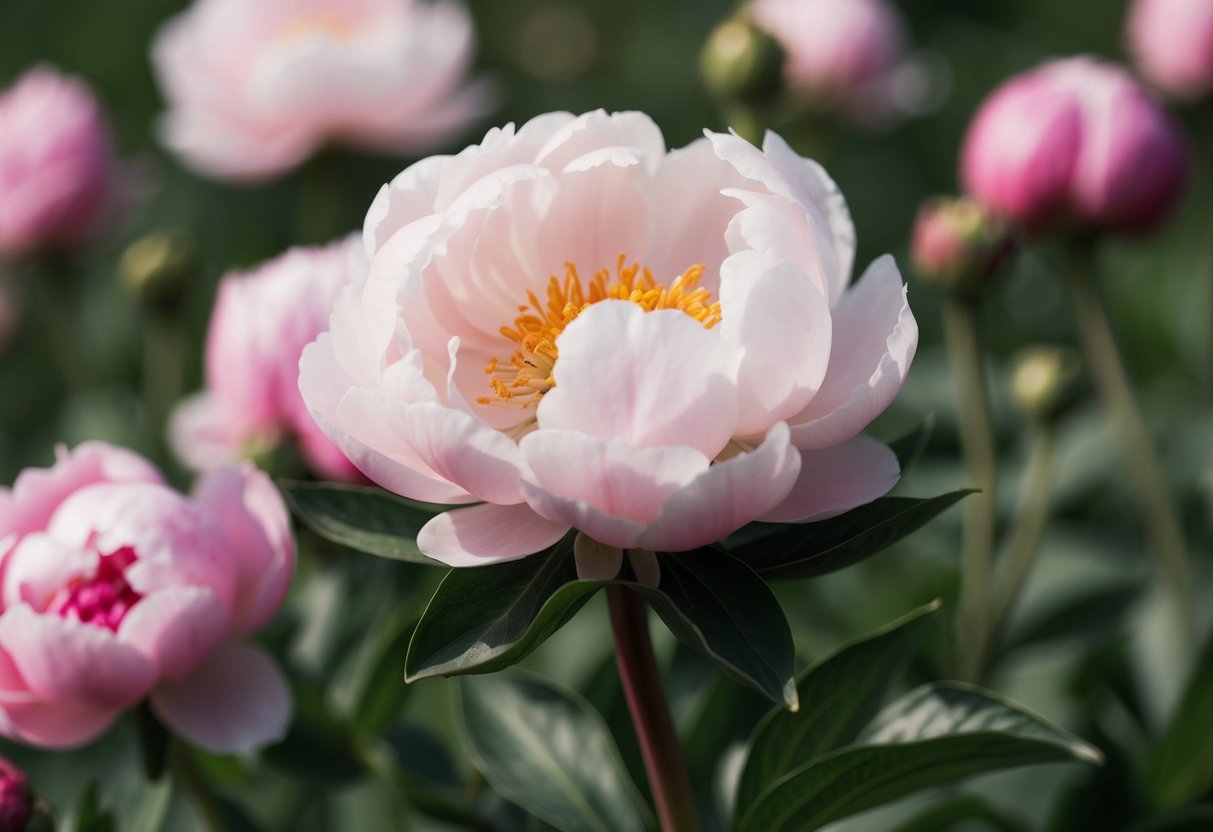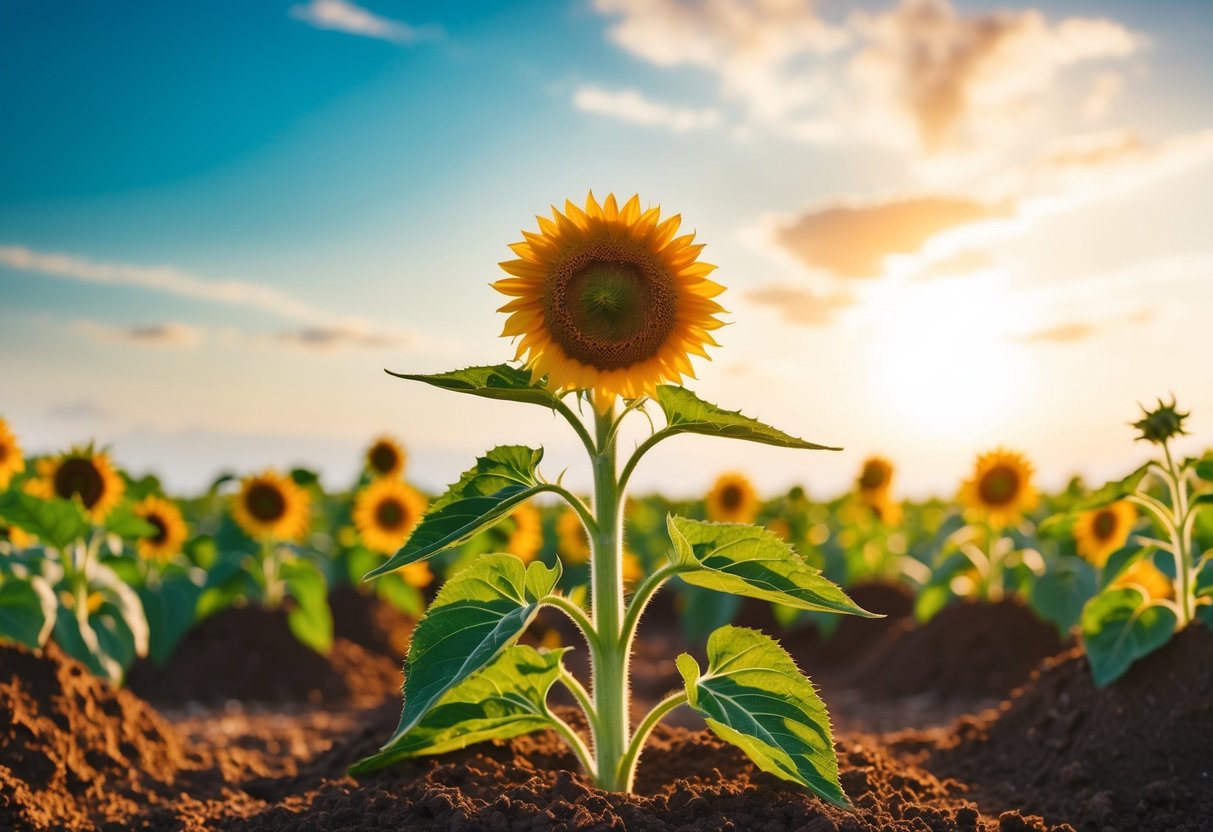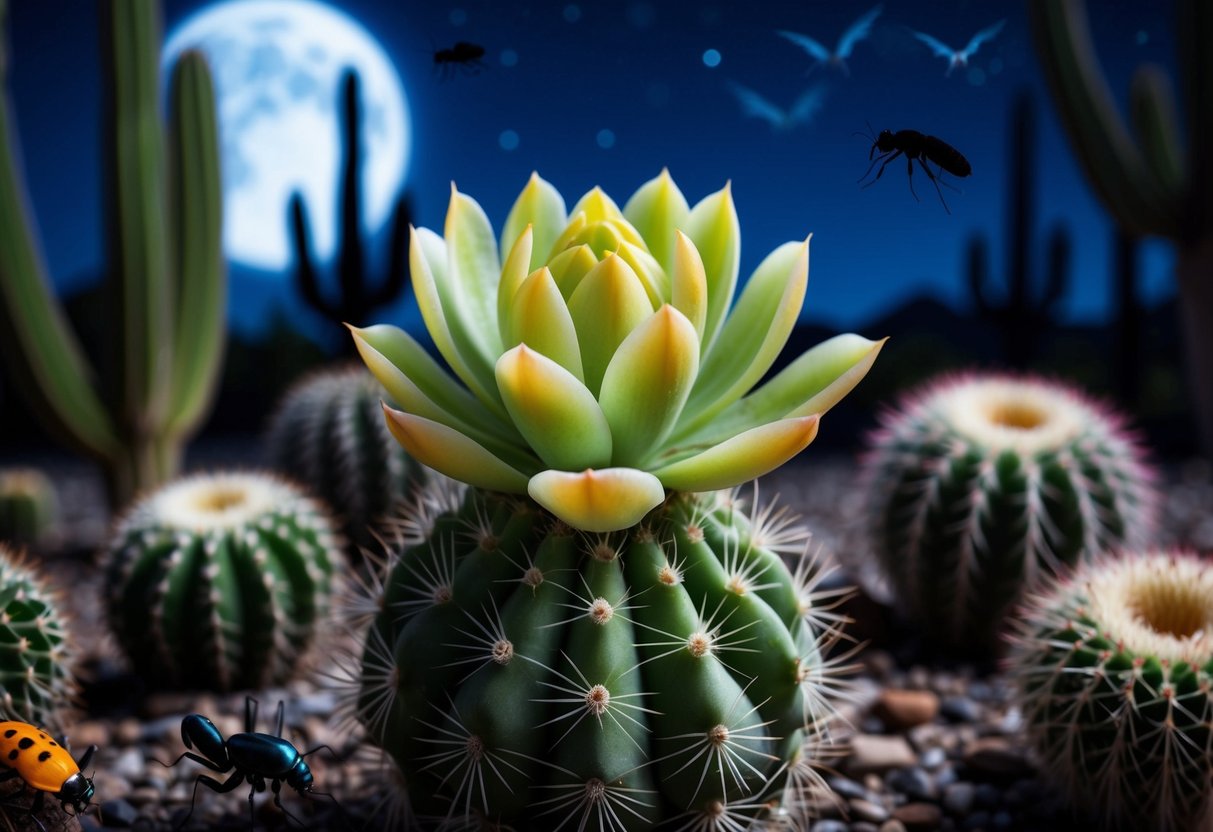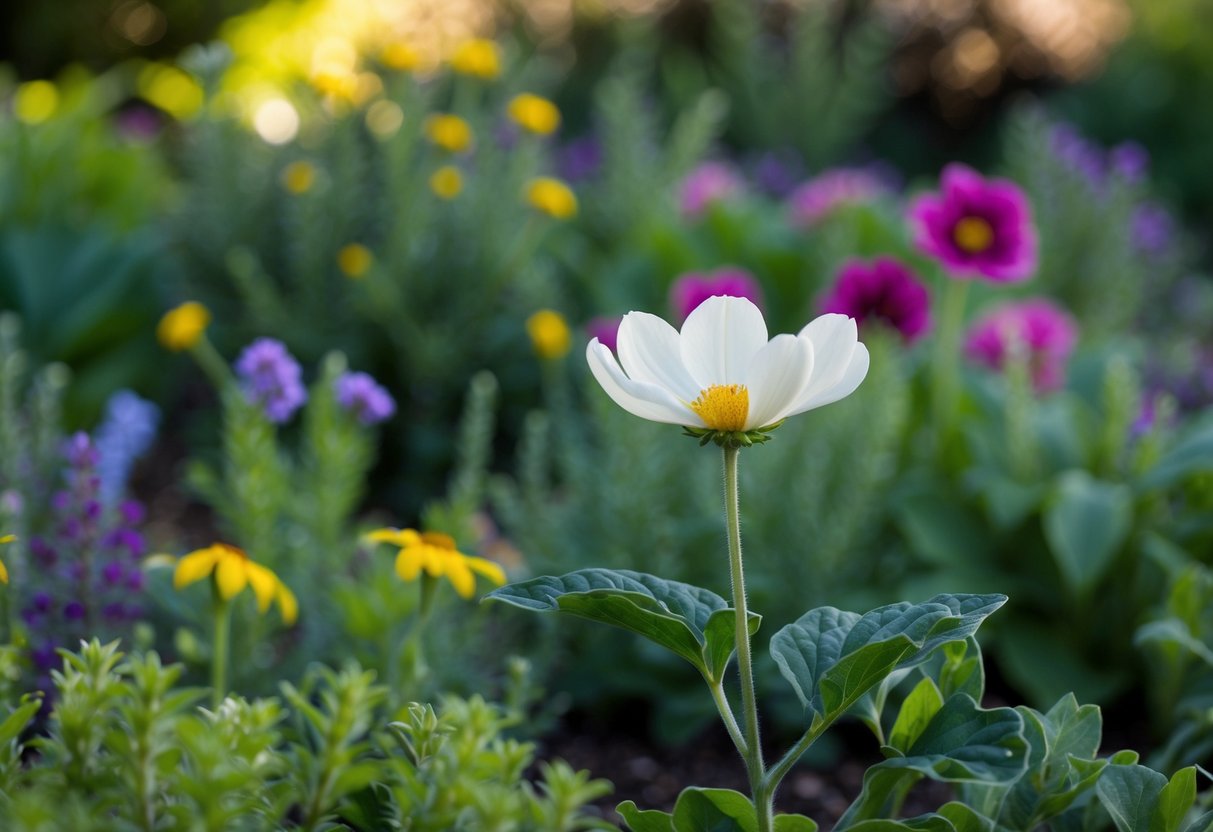What Flower Takes Forever to Bloom? Discover the Slow Bloomers
Imagine waiting years to see the vibrant blooms of a plant sitting patiently in your garden. The corpse flower, or titan arum, can take up to 20 years to bloom, making it famous for its lengthy flowering cycle. Also known for its size and unique scent, this plant offers a fascinating story of patience and anticipation.

Many gardeners love the enduring beauty of perennial plants, which return year after year. Perennials like the black-eyed Susan are popular for their lengthy blooming periods. They bright up your garden with vibrant colors from summer into fall. These trusty flowers might not take decades like the corpse flower, but they spread joy every season.
The thrill of seeing a long-blooming plant eventually flourish is unmatched. Some flowers, like the agapanthus, provide stunning visual interest with their colorful blooms while requiring little attention. It’s fascinating to learn which plants hide their beauty for years only to surprise you later with magnificent flowers. Whether you’re into growing long-lasting perennial flowers or witnessing a rare bloom, your garden can become a haven of delightful wonders.
Understanding Perennials

Perennials are fascinating plants that return year after year, offering consistent beauty to your garden. While annual flowers only last one season, perennials invest in long-term growth.
Characteristics of Perennial Plants
Perennials live for multiple years, regrowing after each winter. Longevity is a key trait, where plants like coneflowers and black-eyed Susans thrive across seasons. They are usually hardy, meaning they can withstand various weather conditions.
Another characteristic is root system development. Perennials invest energy in building strong roots, which helps them survive from one year to the next.
They bloom at specific times, often providing color throughout the spring, summer, or fall. Some perennials, like Salvia, continue blooming longer if you regularly deadhead them. This makes them suitable for different garden styles.
Perennials vs. Annual Flowers
When deciding between perennials and annual flowers, think about the commitment. Annuals complete their lifecycle in a single year, offering vibrant blooms for that period.
In contrast, perennials require patience but offer lasting rewards. They generally need more initial care to establish, including location, soil, and sunlight considerations. Long-blooming perennials like coneflowers deliver lasting color year after year with less replanting effort.
Annuals can provide brilliant instant color, ideal for short-term displays or filling specific garden spots. Perennials, however, build a garden’s backbone, gradually maturing and enhancing your landscape. This long-term reliability may suit you if you prefer a more stable garden structure.
Optimal Growing Conditions

Making sure your flower has the right growing conditions can help it bloom faster and more beautifully. It’s important to get details like sunlight, soil, and watering just right to give your plant the best chance to thrive.
Sunlight and Soil Requirements
For many flowers, finding the right spot in your garden is key. Full sun is often needed, meaning your plant will do best if it gets six or more hours of direct sunlight each day. This helps them grow strong and healthy.
When it comes to soil, you’ll want well-drained soil. This means the soil should let water pass through without puddling on top. If your soil is too dense, try mixing in materials like sand or peat moss. This helps improve drainage and prevents root rot, letting your flowers develop their best blooms.
Different flowers may have different needs based on the hardiness zone where they grow. Hardiness zones show the climate area your plant will thrive best in, so make sure to choose flowers suitable for your area.
Watering and Maintenance
How much you water can affect how quickly a flower blooms and how long it lasts. Some plants are drought-tolerant and need less frequent watering, while other flowers might require more regular attention. Checking the soil’s moisture regularly ensures they’re not too wet or dry.
In terms of maintenance, a low-maintenance flower will save you time. Pruning dead leaves or spent flowers can encourage more growth and help new blooms appear. Removing dead foliage also keeps pests and diseases at bay, ensuring healthy plant growth.
Understanding these factors ensures your flowers have the best chance to bloom beautifully and for a long time.
Popular Perennials That Bloom All Season
Perennials that bloom all season make gardens vibrant and full of color. They offer a range of hues and forms, and some popular choices include daylily and phlox. You’ll also find that caring for these flowers can be both rewarding and enjoyable.
Long-Blooming Varieties
Several perennial varieties stand out for their ability to bloom throughout the season. Daylilies are popular due to their stunning colors and hardy nature. You can also consider coneflowers, which have distinctive cone-shaped centers and drooping petals. They thrive in sunny spots and attract pollinators.
Phlox is another excellent choice, offering clusters of small flowers in shades from white to deep pink. Yarrow and salvia also boast long blooming periods, bringing vibrant yellow and blue hues to your garden. These flowers are both drought-tolerant and low-maintenance, making them ideal for various climates.
Caring for Your Blooming Perennials
To keep your perennials flourishing, regular care is essential. Deadheading, or removing spent flowers, encourages continuous blooming. You should ensure these plants receive full sun and plant them in well-draining soil for best results.
Lavender and many other perennials need moderate watering, so avoid overwatering them. Use mulch to retain moisture and keep weeds at bay. Feeding your plants with a slow-release fertilizer at the beginning of the growing season can support their health and vigor.
Regular care will help maintain healthy growth, ensuring your garden stays full of life and color.
Beneficial Companions and Pollinators

Creating a vibrant garden relies on attracting pollinators and planting beneficial companions. These help your garden thrive while boosting the beauty of your flower beds and garden landscape.
Attracting Butterflies and Bees
Butterflies and bees are essential pollinators that can transform your garden. By incorporating flowers like lavender and marigold, you can create an inviting environment. The rich scent of lavender draws in bees while also warding off unwanted pests such as fleas and mosquitoes, making it an excellent multi-purpose plant.
Bright and colorful marigolds are perfect for attracting not only bees but also moths and butterflies. These flowers bloom from late spring to late fall, providing a long-lasting food source for pollinators in various climate zones. With their vibrant hues, they offer visually stunning cut flowers for arrangements, enhancing both your indoor and outdoor spaces.
Companion Planting for Perennials
Selecting the right companion plants can make a big difference in the success of your perennial garden. Pairing bee balm with vegetables is smart because it attracts pollinators and helps improve yields. Its aromatic foliage also deters certain pests, making it a good neighbor for your garden’s health.
For a garden landscape that thrives, try planting asters. Most asters are drought-tolerant, offering ample nectar during their late-blooming season. This makes them beneficial companions by extending the food supply for pollinators like butterflies late into the year. These plants not only fill your garden with charming blossoms but also play an active role in maintaining a healthy ecosystem.
Designing Your Garden with Perennials

Creating a garden with perennials can bring vibrant colors to your space and ensure blooms from spring through fall. Using a mix of hardy perennials and flowering shrubs offers a sustainable and beautiful landscape.
Creating Colorful and Sustainable Blooms
To achieve a colorful garden, focus on a mix of perennial shrubs and flowering shrubs like black-eyed Susans or hydrangeas. These plants offer lasting blooms and are easy to maintain. Cottage gardens are a popular design, featuring layered plantings that create a cozy, lush look.
Mix summer flowers like daisies and lavender with shrubs for contrast. Consider using a blend of annuals and perennials to maintain color throughout the growing season. Hardy perennials like daylilies and hostas can withstand various climates.
When selecting plants, prioritize those that match your climate zone and soil conditions. This ensures healthy, vibrant blooms. Stay aware of plant height and space needs to prevent overcrowding, allowing roots to grow strong.
Planting for Continuous Blooms
Strategic planting involves selecting perennials that bloom at different times. Begin by planting spring-blooming perennials such as tulips. Follow these with summer flowers like coneflowers, and finally, add fall bloomers such as asters. This sequence keeps your garden vibrant throughout the year.
You should space out plantings to give each flower room to grow. Crowding can lead to competition for nutrients, weakening your plants. For a seamless transition between bloom times, use plants with overlapping flowering seasons.
Perennial shrubs like azaleas and spireas can provide structure and ongoing interest in your garden. By diversifying your plant choices, you create an environment that’s appealing to both people and pollinators like bees and butterflies.
Embrace varied textures and shapes by mixing different foliage types, ensuring visual interest beyond just blooms.







